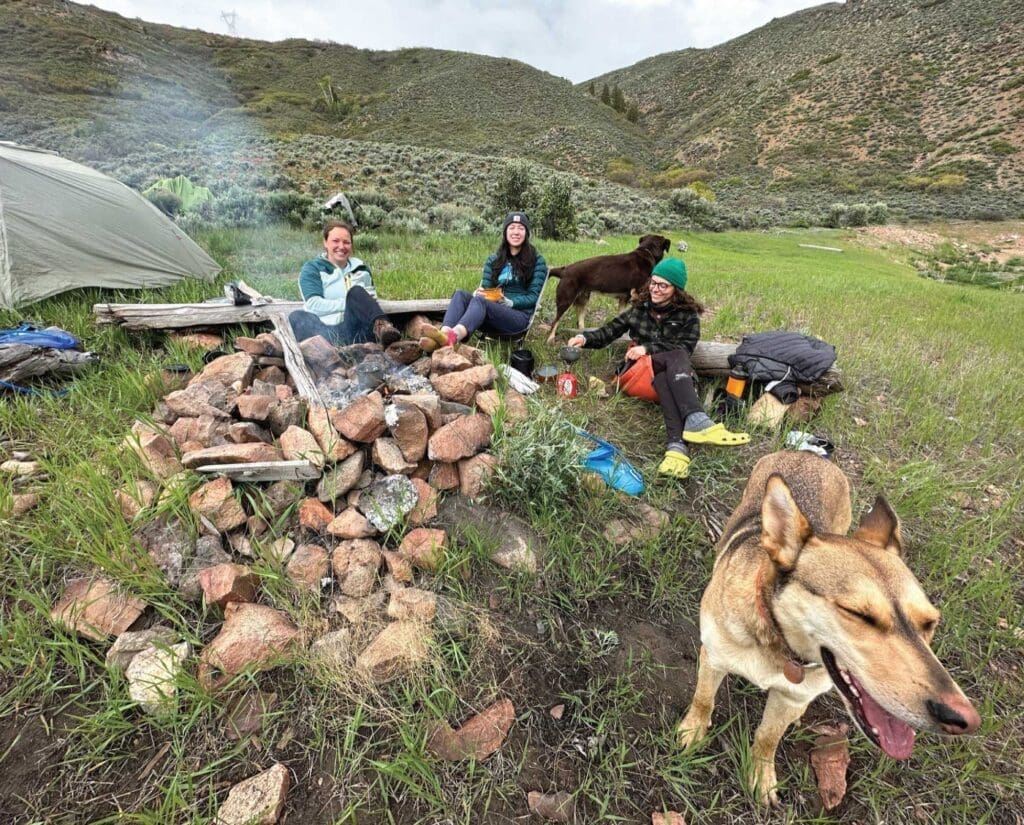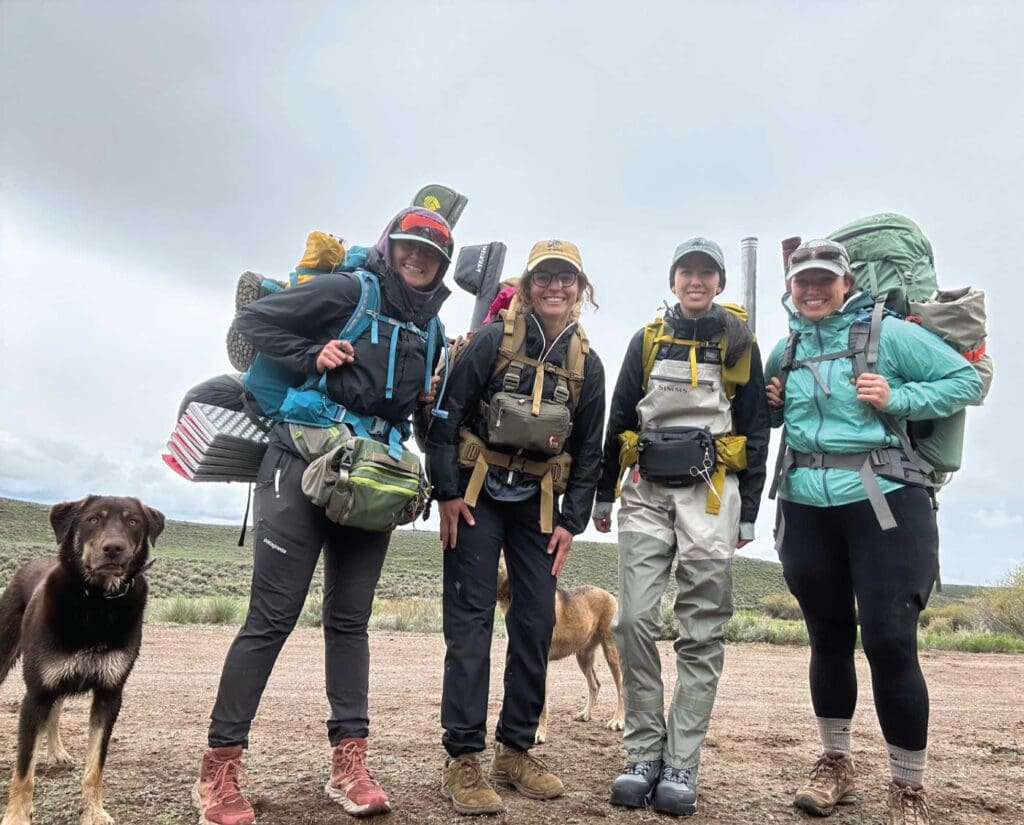How to Camp with a Dog
Here are some good practices for bringing your dog camping from gear lists to car camping
Rosie, my German Shepherd mix, loves any outdoor adventure I can throw at her. Although she’s not necessarily a hunting dog per se, I take her small game hunting, fishing, horseback riding, and camping with me all the time.
My dog gets extra exercise and high-quality life experiences when she tags along on my outdoor adventures. Bringing Rosie camping with me also adds peace of mind. Her shepherd-like qualities mean she checks in with me regularly, stays close to me on the trail and in the woods, and cues me into noises, smells, and sounds my human senses can’t detect.
If Rosie is on high alert, staring unblinkingly across the hillside, a quick glassing session with my binoculars tells me there’s a bear across the way. If she constantly sniffs the wind and refuses to get any closer to that trout pond, I decide to go the other way; one close encounter with a mountain lion a few years ago was enough for me. If Rosie readily curls up next to me in my tent and falls fast asleep, I assume our sleeping conditions are safe, and I can pass out, too. She’ll loudly let me know if something stirs outside our tent at night. In addition to keeping me safe while camping, Rosie brings joy to our shared adventures I’d never experience without a dog.
Whether I’m car camping or packing into a backcountry campsite, camping with a dog adds several new elements to a trip compared to when it’s just me. Here are a few tips and tricks to have a fun, safe, and successful camping trip with your dog.

Create a Packing List of Dog Camping Supplies
When camping with a dog, you’ll need more supplies than if it were just you. I always create a dog-based packing list in addition to my own gear list. Items I always include are:
- A leash
- A collapsible bowl for feeding and watering my dog
- Dog food and water
- Something for my dog to sleep on
- A dog first aid kit
- Poop bags
- A toy or two if we’re car camping
Leashes are a necessary dog camping item. Many camping spots or popular hiking trails require dogs to be leashed. If you’re not in one of those areas, having a leash can help keep your dog safe if you encounter wildlife, see other humans and dogs on the trail, and keep your dog from expending extra energy, among other things. Even though they can be bulky, packing a leash is a must.
Dog food and water are a given when camping with a dog. Many designated campsites have potable water available, but if you’re going to be in a dispersed camping area, be sure to bring extra water for your dog. You should have a good idea of how much water your dog drinks on hot days to avoid dog heat illness, but if not, bring more water than you would expect. I usually bring all the water I can carry while backpacking which is around four or five liters. If I’m car camping, I have several gallons available. Collapsible food and water bowls are great for minimizing weight and space in your car or backpack. And don’t be that person who forgets to pack dog food; sure, your dog can eat the leftovers from your Mountain House meal in a pinch, but an upset stomach and doggy diarrhea are potential hazards if you don’t bring dog food. No one wants to clean up dog poop from their tent floor.
Additionally, I like to bring something for my dog to sleep on. If I’m car camping, I bring her favorite dog bed. It’s familiar, smells like her, and she knows it’s her safe place to relax. If I’m backpacking, a small blanket or my flattened Crazy Creek camp chair becomes her cozy spot in my tent. She’s off the ground, better insulated from chilly nights, and doesn’t try to steal my sleeping bag in the middle of the night.
A doggy first aid kit is another necessary item when camping with a dog. Rosie’s first aid kit simply becomes a part of my own kit while camping. If she gets a cut, a sunburn, or a thorn stuck in her foot, our first aid kit comes to the rescue. If a dire emergency happens, a tourniquet, clotting agents, bandages, dog-specific pain and inflammation medications, and my vet’s information are in there, too. If you’re traveling a few hours from home, research vet offices near your campsite and stick their contact info in your first aid kit as well.
Lastly, dog poop doesn’t break down well in the backcountry. In areas where leave-no-trace practices are required (i.e., you’re packing out your waste, too), pack out your dog’s. Designated campgrounds have trash cans; don’t leave your dog’s poop out there for someone else to find on their vacation.

Plan Your Backpacking Route With Your Dog In Mind
Are you taking your dog into the backcountry to camp? Take a look at your route from your dog’s perspective. Is there a long stretch where there won’t be any water access? If so, pack extra water so your dog can get a drink during those dry miles.
Review the weather forecast from your dog’s view, too. Hot, dry weather means you’ll have to take consistent breaks so your pup can catch her breath and cool down on the trail. Perhaps mark a few spots along your route with shade trees, and plan to take water breaks in those locations.
You may have to help your dog pace herself. If your dog is like Rosie, she’ll sprint after every chipmunk, rabbit, bird, or leaf blowing in the wind, even if it means she runs up a steep hill five times. You don’t want your dog to burn out before you get to your camping spot, especially if they’re not in the best physical shape. Keep your dog from chasing every little thing, take frequent rest breaks, or rein her in with a leash for a portion of the hike if it means she’ll have enough energy to get to where you’re going.
Lastly, plan for the wildlife encounters you might have en route. If you’re in an area with rattlesnakes, you must be prepared for a potential snake bite while you’re out there. Does your dog chase deer and have a difficult time being called off? Consider leashing her or putting your e-collar on her before you hit the trail. If coyotes, bears, or mountain lions live in your neck of the woods, keep your dog close and have a plan in place if you encounter a predator.
Car Camping With A Dog
Bringing your dog car camping with you brings a whole new level of fun. However, many car camping areas are designated campgrounds full of other campers and their dogs.
If you can, scout out where you’ll stay before camping there with your dog. Are leashes required? How close are the other campsites? Do other campers have dogs, too? Seeing what you’ll deal with lets you better plan your camping trip.
If your dog isn’t friendly with other dogs or unfamiliar humans, maybe camping near others isn’t the best idea. If your dog likes to wander, bring a tie-out so she can hang out with you at your campsite without entering other people’s camps. Even if your dog is friendly, that doesn’t mean the people around you like dogs as much as you.
Lastly, bring a few toys and treats for your pup. Tennis balls are Rosie’s personal favorite. Chew toys are a great distraction for your dog if you’re trying to cook camp dinner, wrangle your kids, or keep your dog from feeling bored while you read the latest issue of Project Upland Magazine. Bringing treats lets you do some training with your dog, too. For example, you two can practice staying, coming, and lying down in a distracting outdoor environment. Training and playing at your campsite ensures your next camping trip will be even better than your current one.
Camping with your dog is incredibly rewarding. Making sure these are fun, positive, trust-building experiences for your dog will make every trip more successful than the last. By packing for your dog, being prepared for what you might experience in the woods, and adequately planning for your car camping or backpacking trip, you’re guaranteeing that your dog has a positive experience with you in camp. After all, nothing beats having a tired, happy pup after an unforgettable camping trip together.
The post How to Camp with a Dog appeared first on Project Upland.
